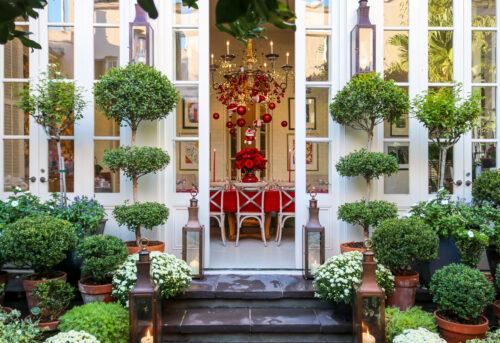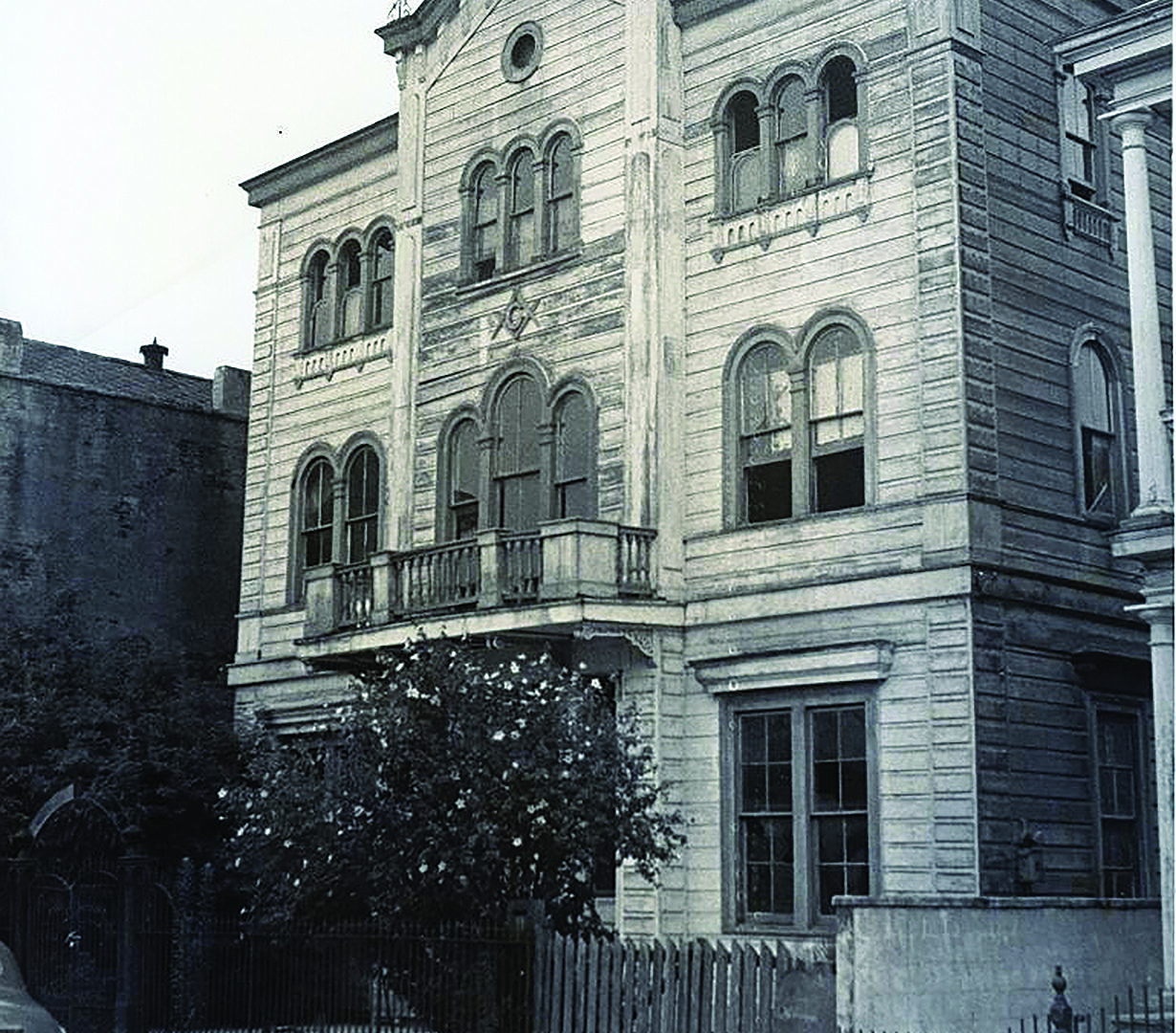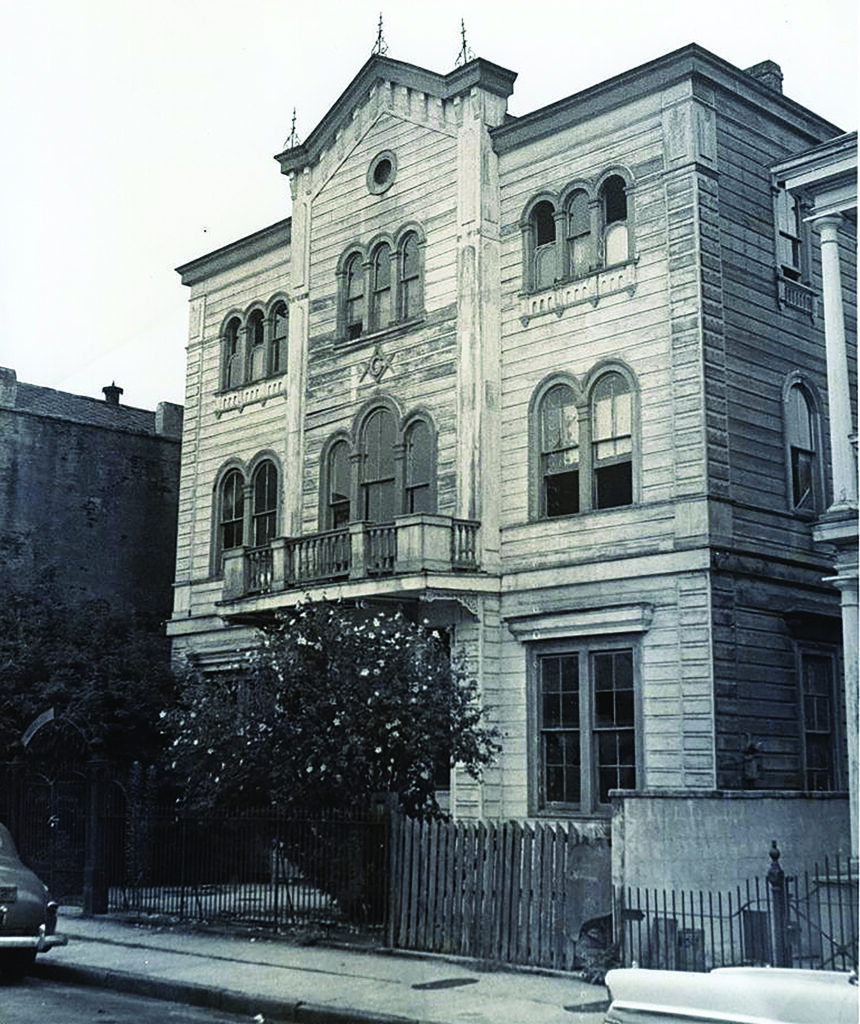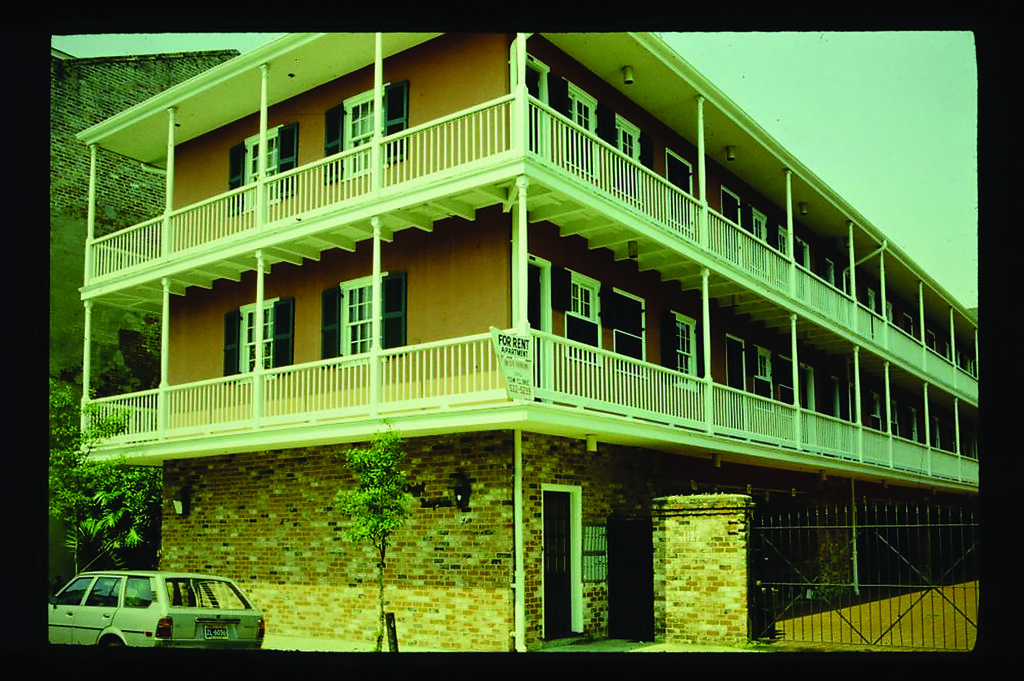YOU’VE PROBABLY NOTICED IT, a specimen of early-1960s pastiche architecture more befitting of Metairie or Terrytown than the French Quarter. What had previously occupied 1125–1127
Dauphine St. exhibited extraordinary cultural diversity, even by local standards, until a questionable demolition in 1962 — approved by the city agency tasked with protecting the historic district.
In a quiet residential section of the neighborhood, this particular parcel, on the lake side of Dauphine Street between Ursuline and Gov. Nicholls streets, has hosted institutional uses at least since 1825, when La Lodge de la Concorde, an organization of women married to Free Masons, acquired the property from Marc Thomas Aubert. Seven years later, according to records in the Vieux Carré Survey, members contracted builder Felix Pinson to erect a structure 24 feet wide, 63 feet deep and 25 feet high to house the Masonic Lodge Concorde No. 3. That organization sold the building to the Bank of Louisiana as part of a lawsuit settlement in 1843, and 10 years later, it came into the possession of Clothilde Augustine Huet Deron.
Deron and her husband Etienne Elie Deron operated the bilingual St. Louis Institute for Young Ladies, which they established in 1849 on busy and cramped St. Louis Street. Now with more spacious environs in the quieter lower Quarter, Deron was able to expand her institute, which prospered through the 1850s and endured through the Civil War. A June 1866 article in the Daily Picayune described the St. Louis Institute as enrolling “one hundred and forty scholars…dressed with that exquisite taste, in the exercise of which our Creole families cannot be approached.” Deron expanded her school again in 1868, following her acquisition of an adjacent property, though by now she had turned over everyday administration to a new directress named E. LaVillebeuvre. According to the Sanborn Insurance Map of 1876, the institute occupied Pinson’s brick building set back from the street on a campus-like parcel that covered nearly one-fourth of the entire square, encompassing a dormitory and many other dependencies. Its street address at that time spanned from 273 to 283 Dauphine, corner Hospital, now Gov. Nicholls.
In the 1880s, health problems of its directress and other concerns led the aging widow Deron (listed as Clothilde Augustine Huet) to sell the entire property in May 1883 to the Lusitania Portuguese Benevolent Association. According to Manoel Cardozo, author of The Portuguese in America (1976), this organization was “the first Portuguese mutual aid society in the United States,” founded in New Orleans in 1847 by Azorean laborers who had been recruited in 1840 to work on a Louisiana sugar plantation and became the first known Portuguese settlers in the South. “Many of these immigrants married Creole women and apparently remained on the plantation until the Civil War,” wrote Cardozo. Some fought for the Confederacy, and many eventually settled in New Orleans.
A benevolent association like Lusitania Portuguese enabled members to retain their ethnic and linguistic bonds, assist each other in life’s travails, and enjoy each other’s company. Members were known for their spirited civic activities and elaborate parades. All that and more they did at their Dauphine Street compound, which in 1894 got the new street number of 1125.
Sometime between 1885 and 1896 (two dates for which we have Sanborn Insurance Map coverage), the main Pinson-built structure of 1832, later used as the lodge and the girls’ school, was replaced by a somewhat larger building, two stories high and three in the front, with a dance hall and kitchen in the rear. Brick in construction and covered in clapboards, the new edifice had double- and triple-arched windows on its façade and tall slender apertures on its sides, making it look somewhat like a church.
Countless social events for the Portuguese-speaking community, from grand balls to holidays to somber funerals, took place at 1125 Dauphine St. until April 1919. That’s when the Lusitania Portuguese Benevolent Association sold the building to another Masonic body — this one founded in New Orleans in 1915, with the elaborate name of Shalimar Grotto No. 59 in Mystic Order of Veiled Prophets of the Enchanted Realm. At the time, the Masons, like most elements of Southern society, were segregated by race; Shalimar Grotto comprised white Masons, and while there were also black Masons, some of their lodges were not recognized by the larger organization.
According to a 1922 article in The Times-Picayune, Shalimar Grotto No. 59 had “bought the place at auction and expended considerable money in the installation of an auditorium and stage, a model kitchen, club rooms, and other facilities.” The Shalimar prophets used The Grotto to the fullest, hosting rituals, socials, balls and even championship wrestling matches in the otherwise quiet neighborhood.
But when leaders of the Masonic Lodge of Louisiana began work constructing a big new temple at 333 St. Charles Ave. (now the Hilton Hotel and Luke Restaurant), Shalimar Grotto No. 59 decided to sell their Dauphine Street lodge.
With the help of the Roth & Rosenberg real estate firm, members found a buyer within their fraternal community — the Eureka Masonic Temple Association, which The Times-Picayune described as “composed of local negro lodges, headed by T.A. Galbraith.” Circumstances of the sale are a bit veiled; a brief article in the New Orleans Item in November 1922 reported that “the Prophets had sold the property at 1125 Dauphine street and would not purchase their new home until sometime around the first of the new year. The old property has been sold to… a secret organization not recognized by the white Masonic body in Louisiana.” Later that decade, however, Shalimar Grotto worked with the Eureka Temple and their 10 affiliated lodges to win “a thirty-year fight to provide themselves [that is, all the black lodges] with a joint home,” reported The Times-Picayune in July 1928. From then on, the Eureka Grand Lodge at 1125 Dauphine became officially known as the Bethlehem Temple.
From 1922 to 1960, African American Masons convened regularly at the Bethlehem Temple on lower Dauphine Street. Those 40 years would bring great changes to the French Quarter, including the rise of the preservation movement; official protection through the city’s Vieux Carré Commission in 1937; the Depression and World War II, followed by gentrification and mass tourism; and the opening years of the Civil Rights Movement.
In May 1960, change came to 1125 Dauphine. The Eureka Masonic Temple Association held its last meeting in the Bethlehem Temple, and in June, it sold the aging building for $34,000 to real estate agent Merrill P. True. Within hours, True turned around and sold the property to an oil executive named David E. Vasser for $40,000 cash, pocketing $6,000 in an afternoon.
It is unclear what Vasser’s original intentions were, but over the next year, the notion of replacing the deteriorating building with modern apartments came to be seen as a viable and possibly lucrative solution. After all, rent was rising as the Quarter became a fashionable place to live again, and no one was going to pay top dollar to live in a drafty old former temple. This being a time when preservationists did not particularly value postbellum structures, and when Black-owned real estate had little appeal to Whites, demolition seemed to be the appropriate action. The Vieux Carré Commission issued a permit so long as the replacement would reflect a historical aesthetic.
What the commission approved to replace the old temple was the Chalet Dauphine, described by The Times-Picayune as the “Newest Authentic Addition to the Quarter,” a “luxury three-level apartment structure [with] off-street parking,” bearing an “Early Louisiana style with West Indian tones,” complete with “authentic plantation shutters, turned wood columns and wrought iron rails.” Designed by J. Buchanan Blitch and costing $400,000, the Chalet Dauphine would “replace a dilapidated structure” and begin construction in May 1962.
Bell House Wreckers arrived that April to prepare the 80-year-old structure for destruction. “No telling what you’ll find in the attic when you’re tearing down a house,” foreman Mike Tessitore told a reporter for the States-Item on April 17, 1962. During his inspection, Tessitore “came across a very elaborate antique coffin (somewhat like a mummy’s tomb) with handsome brass hardware,” wrote the reporter. “But he left it there overnight and wouldn’t you know it, some Quarter vandals stole it!”
Those vandals may have preserved the last remaining piece of 1125 Dauphine St.
The Bethlehem Temple, shown around 1960, prior to its demolition. Image courtesy of the New Orleans Public Library
The 1876 Sanborn Fire Insurance Map shows the layout of the St. Louis Young Ladies Institute at what was then 273-283 Dauphine St.
Chalet Dauphine in 1980. Image courtesy of the New Orleans Public Library









